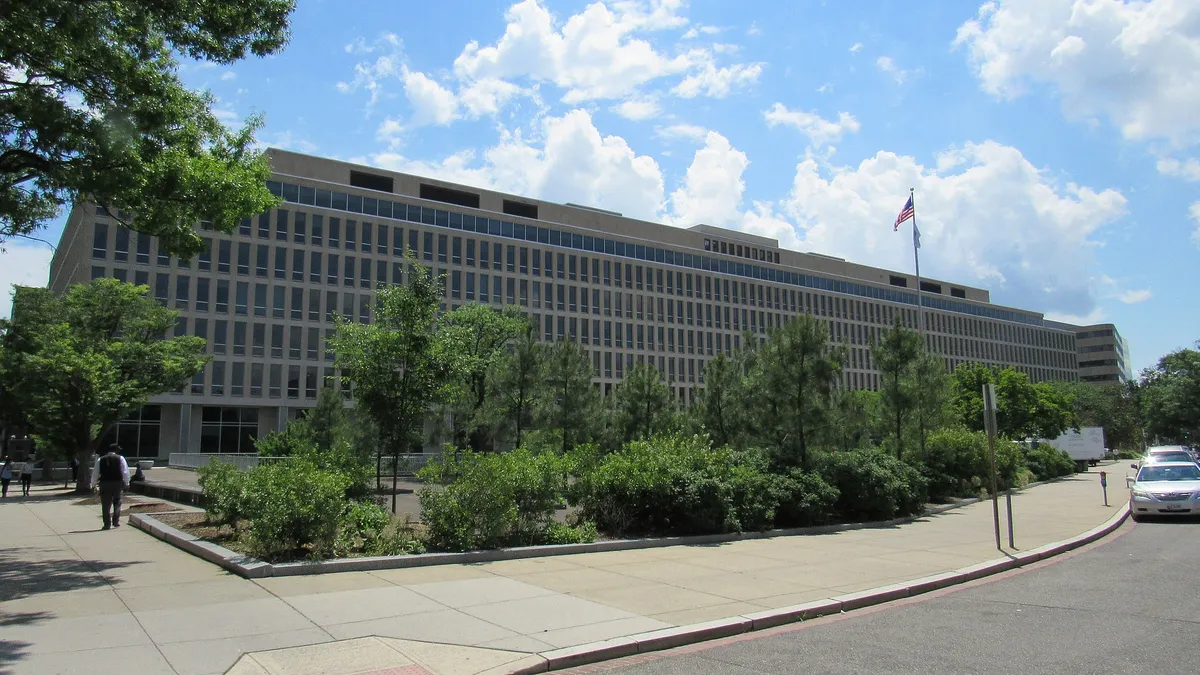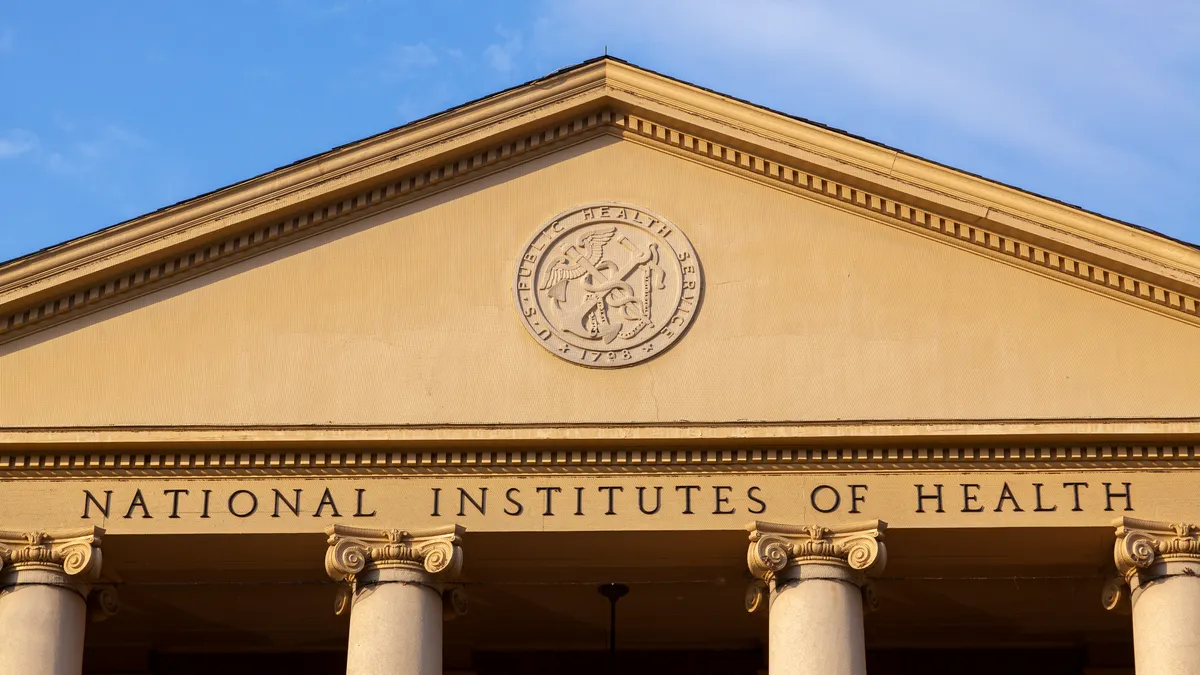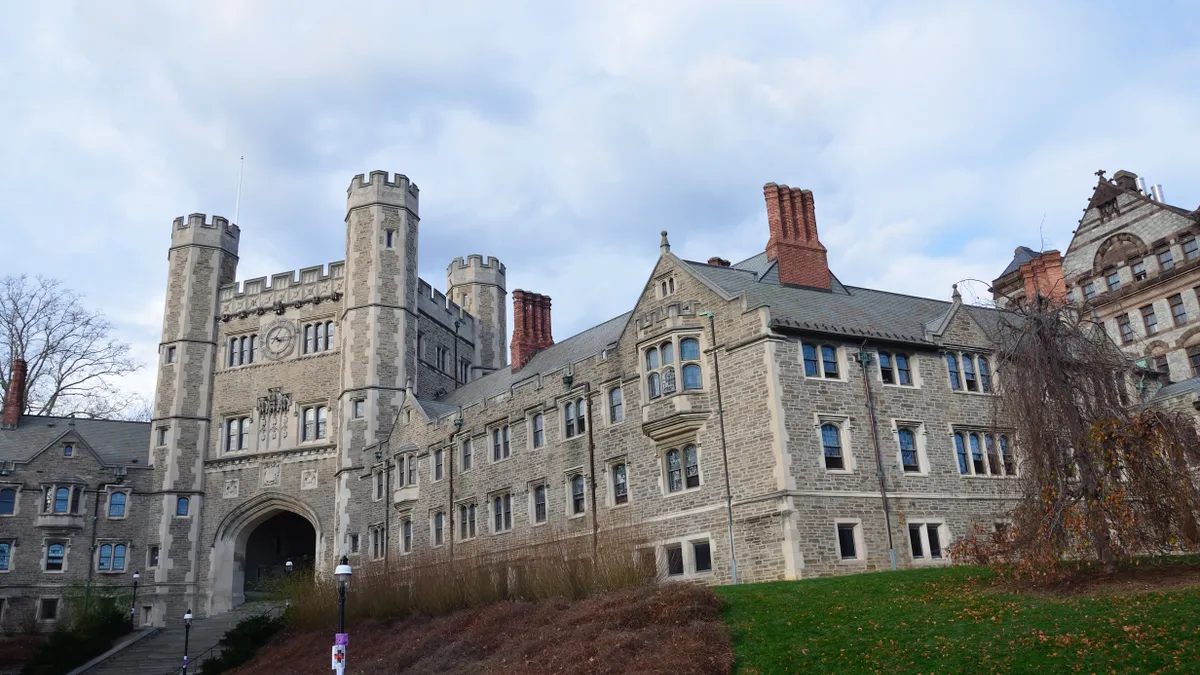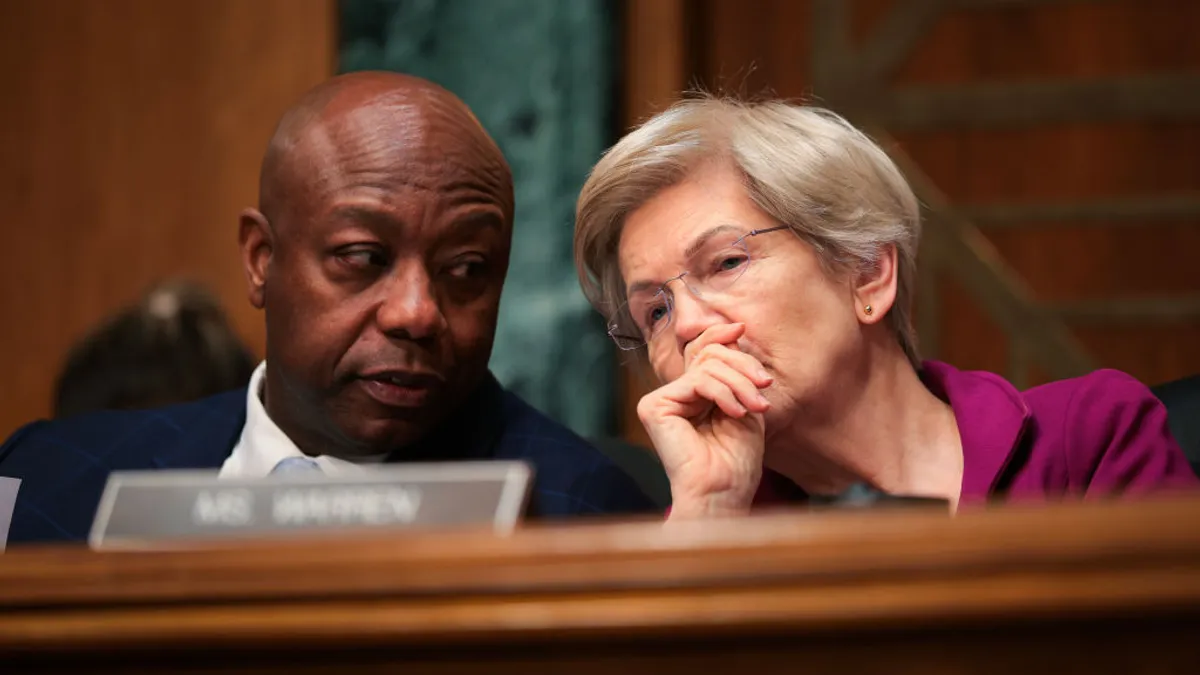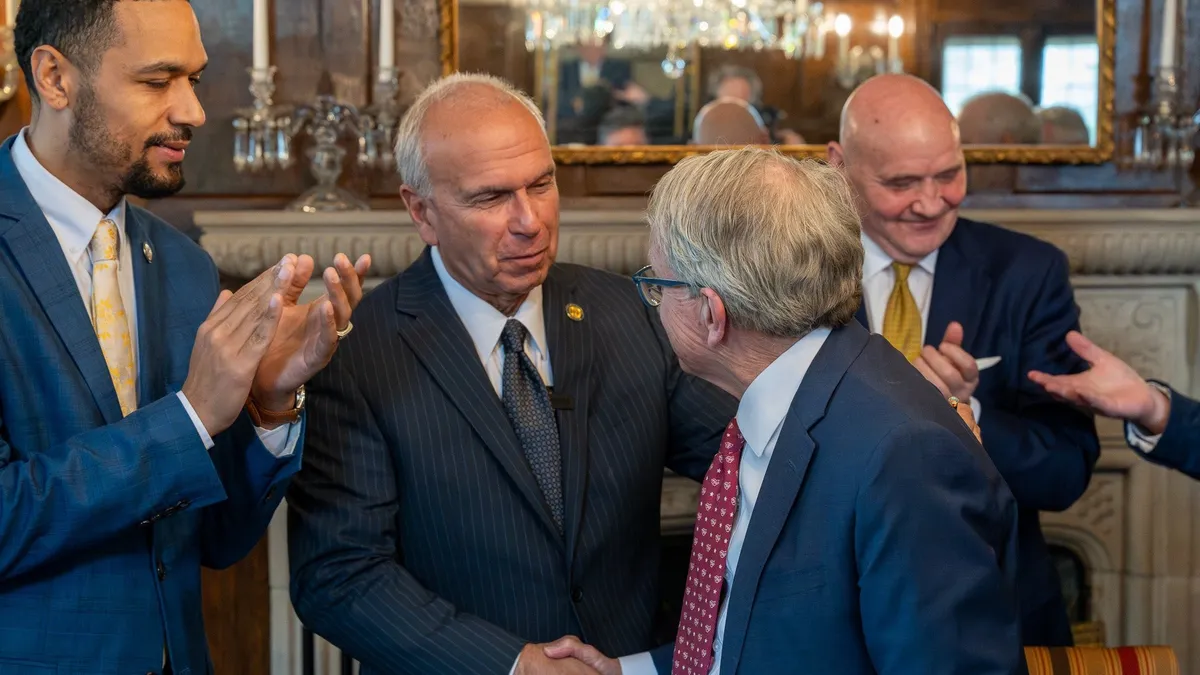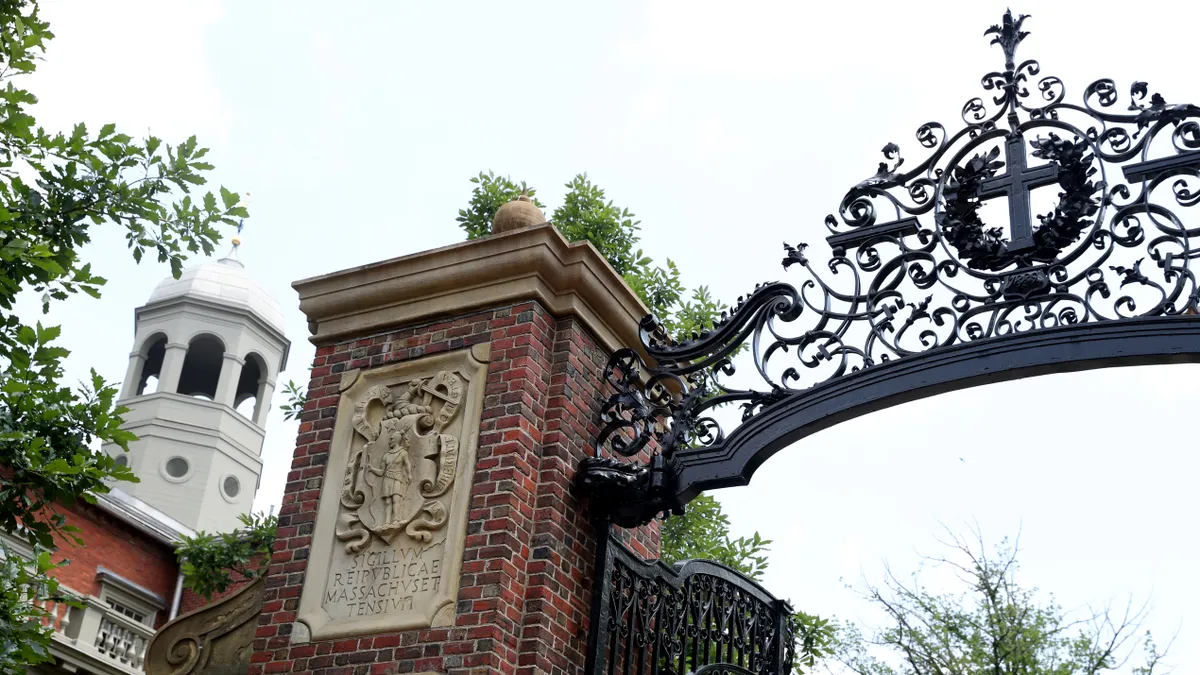The U.S. Department of Education’s Office of Federal Student Aid has always had big responsibilities relative to its size. Its primary job is overseeing the federal government’s student loan portfolio, a feat it accomplishes with less than one-third of the Education Department’s staff. In fiscal years 2022 and 2023, it cost the government $2 billion per year to run the office.
But even starting with that big job, the office’s responsibilities are multiplying, and experts say it doesn’t have the funding it needs to make things run smoothly.
This year, FSA is expected to steward borrowers back into repayment after a three-year pause, implement new income-driven repayment plans, and bring millions of defaulted borrowers back into good standing, among a myriad of other initiatives. That takes money.
“FSA oversees and runs programs that touch every aspect of students’ and borrowers’ experience,” said Sarah Sattelmeyer, who manages projects related to student loans and higher education at New America. “FSA has a lot on its plate and not enough money to do everything that they want to do and that we want them to do.”
Cracks may well already be forming in the office’s ability to accomplish its directives. The office has been charged this year with launching an updated and streamlined version of the FAFSA — the Free Application for Federal Student Aid. Though that launch was meant to happen this upcoming October, the department has said it won’t be able to make that deadline. The new application will be launched sometime in December.
Experts and advocates say that delay could have a domino effect on institutions and state aid authorities, as they scramble to remake timelines and get students their aid packages. And next year’s funding for the office is still up in the air, as the Education Department's budget works its way through Congress.
How we got here
Lawmakers knew that the Office of Federal Student Aid was going to need a funding bump to take on its new responsibilities and offer good service to borrowers. That’s why President Joe Biden requested a more than 30% funding increase last year — a total of $2.65 billion for the office.
Republicans suggested a slightly lower bump of 20%, NPR reported, with the caveat that none of the money could be used for President Biden’s broad student debt relief plan. Democrats, concerned that the compromise could open up the gates to other conditions on funding in the budget, rejected the proposal, according to sources who spoke to NPR.
“This particular funding issue has become highly politicized in the past year. Appropriators and Congress more generally haven't focused enough on making sure that borrowers are at the center,” said Regan Fitzgerald, manager of the student borrower success project at Pew Charitable Trusts. “Regardless of whether or not there is wide-scale forgiveness, a majority of borrowers will still have to enter repayment when repayment starts again.”
The office ultimately received no increase in funding. In real dollars, taking into account inflation, the agency received a cut.
The FAFSA delay
It’s not clear whether the FAFSA delay is directly tied to the flat funding at FSA. It’s certainly unlikely to have helped. Experts say the effects of the holdup are just now coming into view for institutions, states and students.
Some of the strongest effects could be on state aid-granting authorities. Some states have early deadlines for students to apply for grants. And moving those deadlines can be tough, especially if they are written into state laws, said Frank Ballmann, director of federal relations for the National Association of State Student Grant & Aid Programs.
On top of that, the delay could also affect how much funding those state agencies receive to dole out in aid.
“Historically, when a state goes to the legislature, they’ll say, ‘Based on the FAFSAs we’ve seen so far in October, November, December, it looks like FAFSA volume is up 5% compared to last year,’ and that guides how much they request in appropriations,” Ballmann said. “This year that process isn’t going to exist.”
State agencies have many priorities right now, he said, and are waiting for more information from the Education Department about the exact day the application will launch. After all, Dec. 1 and Dec. 31 are very different from the perspective of financial aid processing.
Texas, which has a Jan. 15 priority deadline for financial aid, hasn’t yet made any changes to its timeline. A spokesperson for the Texas Higher Education Coordinating Board said they are determining the best course of action and anticipate having a clearer understanding of next steps by summer.
There is also concern that fewer students will fill out the FAFSA — and therefore fewer students will receive financial aid — under the condensed timeline.
“Depending on the year, 55% to about 57% of FAFSA completions by high school seniors are completed by Dec. 31,” said Ballmann. “Having the FAFSA postponed until its launch sometime in December, you have to wonder if that’s going to create a problem with students not getting back around to it come January or February.”
Karen McCarthy, vice president of public policy and federal relations at the National Association of Student Financial Aid Administrators, said it's not fully clear yet how the delay will affect enrollment. College administrators are just beginning to have conversations about if and how to condense their processes and timelines, and they need an exact launch day to be able to make firm decisions, she said.
Institutions have gradually been shifting their timelines earlier with encouragement from the Education Department, she said. That way, students who apply through early admissions cycles can get their offers with their acceptance notices and have more time to evaluate their finances.
“Now with this delay until December, that does throw a wrench in the works at a lot of institutions,” McCarthy said. “At some institutions it has really caused them to revisit their entire admissions timeline" for the 2024-25 cycle.
The delay stands to affect even colleges that typically send out aid packages later in the cycle, McCarthy said, because they still need to do software testing and other processes.
“Once the FAFSA becomes available, that is really when the whole process starts,” she said. “Many institutions will have a shift of several months, even if they were not sending their aid offers out in November and December.”
Jonathan Fansmith, senior vice president for government relations at the American Council on Education, said he anticipates an effect on enrollment, but isn’t quite sure of the magnitude of that impact yet. The department has been releasing some information about the new model so colleges can try to plan.
“Really the whole reason we do this is to help low-income students and give them more time to navigate the financial aid system and more time to make determinations about what aid offers they may be eligible for,” Fansmith said. “Giving those students two or 2 1/2 months less time is going to be really meaningful.”
At the California State University system, officials say they have not yet made any changes. But the biggest concern will be getting students to fill out the application on the new compressed timeline. They plan to communicate with students to look for their application in December and push aid applications heavily after the first of the year.
“Students used to have all this time to apply,” said Noelia Gonzalez, systemwide director of financial aid programs at Cal State. “We’ll probably see higher levels of stress for students.”
Next year’s funding
Conversations on Capitol Hill about next year’s funding are just beginning. President Biden’s fiscal 2024 budget proposal calls for $2.7 billion for FSA, a $620 million increase from the previous year. Education advocates say getting that funding will be crucial to allowing the Department of Education to complete its directives.
“It’s an agency that is extremely strapped for resources and doing more than it has ever had to do and I think that is going to come back in the form of challenging customer service for borrowers,” said Clare McCann, a higher education fellow at Arnold Ventures, a philanthropy organization. “It’s going to be especially important that the next fiscal year, FY 2024, is back on track. Because this is going to be a year with a lot of consequences.”
Most of the additional costs for the office come from new contracts with loan servicers, who need more money to take on new processes, said McCann, who previously served as a senior policy adviser at the Department of Education.
In negotiations for fiscal 2024 funding, Congressional Republicans have floated the idea of capping discretionary appropriations at fiscal 2022 levels. In a letter to Rep. Rosa DeLauro, D-Conn., ranking member of the House Appropriations Committee, the Education Department said that funding level would cause more than 40 million borrowers to face decreased service hours and longer turnaround times in making any changes to their student loans. Oversight of colleges and universities would also suffer, putting taxpayer dollars at risk, the department said.
“More than 17.6 million students and parents applying for student aid and calling the Department for information could experience multiple-hour wait times and reduced call center hours,” the letter said. Other requests for assistance by students “could see their requests take weeks longer to process.”
It will become clearer by summer what each chamber believes is needed for student aid administration, said Jared Bass, senior director for higher education with the Center for American Progress. But the debt cancellation issue — now before the U.S. Supreme Court — hasn’t gone away and could still stand to affect the course of negotiations.
Bass testified last month in front of the House appropriations subcommittee that deals with education and advocated for creative ways to get some money to FSA. Lawmakers could use different measures, like supplemental appropriations, typically used for emergencies, he said. Lawmakers also sometimes take stop-gap measures to continue funding if negotiations are dragging on.
“If we don’t see a deal until the end of the year, that funding could really come too late to help with things like return to repayment,” said Bass, who used to work for the subcommittee and as a senior policy adviser at the department. “The committee should explore every available option for funding.”
Student aid administration typically doesn’t receive this much attention, Bass said. But that doesn’t speak to its importance.
“It’s so crucial and so central to the operation of programs that members of Congress, their children, their grandchildren and millions of Americans have relied on to pursue educational and economic opportunity,” he said. “If it doesn’t get funded, it throws everything else into jeopardy.”
Clarification: Noelia Gonzalez’s title has been updated to reflect her current status.


